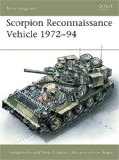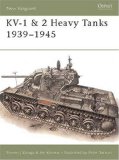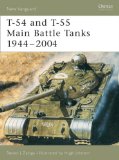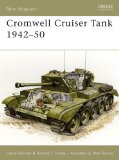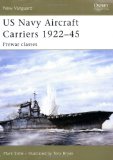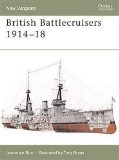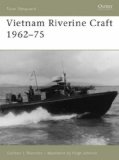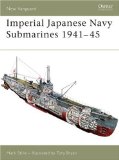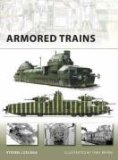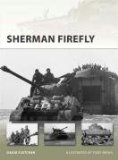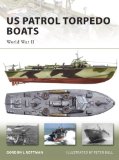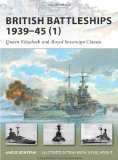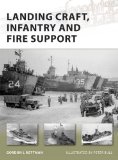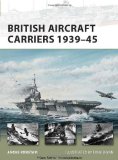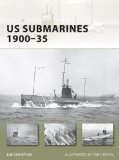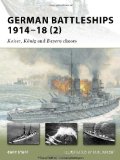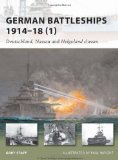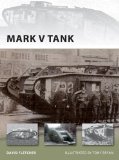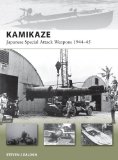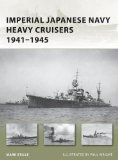1 King Tiger Heavy Tank 1942-1945
Listed under Tiger Tanks2 M1 Abrams Main Battle Tank 1982-1992
Listed under Abrams Tanks3 M4 (76mm) Sherman Medium Tank 1942-1945
Listed under Allied Tanks WWII4 Churchill Infantry Tank 1941-1951
Listed under Allied Tanks WWII5 Tiger I Heavy Tank 1942-1945
Listed under Tiger Tanks6 T-72 Main Battle Tank 1974-1993
Out of Print - Try Used Books7 JS-2 Heavy Tank 1944-1973
by Steve Zaloga, Peter Sarson (Illustrator)
Listed under Allied tanks WWII8 Matilda Infantry Tank 1938-1945
by David Fletcher, Christopher F. Foss, Peter Sarson (Illustrator)
Listed under Allied Tanks WWII9 T-34/76 Medium Tank 1941-1945
by Peter Sarson (Illustrator), Lee Johnson (Editor), Steven Saloga
Listed under Allied tanks WWII10 Warrior Mechanised Combat Vehicle 1987-1994
Listed under Military Vehicles11 M3 Infantry Half-Track 1940-1973
Listed under Tanks
12 BMP Infantry Fighting Vehicle 1967-1994
Jagdpanzer 38t Hetzer, 1944-45 (New Vanguard Series, 11)
by Tom Jentz, Hilary L. Doyle
The Jagdpanzer 38 is one of the best known German armored fighting vehicles from World War II. Rushed into series production in the record time of less than four months, it was instantly recognizable by its sleek appearance created by well sloped armor. Many experts in post-was armour hold the opinion that this tank destroyer was just the answer to Germany's problem of dealing with the numerically superior American M4 medium tank (known to the British Army as the Sherman) and the Russian T-34. A Vanguard series book.
Paperback from Osprey Pub Co
Listed under Tanks
14 Crusader Cruiser Tank 1939-1945
13. Scorpion Reconnaissance Vehicle 1972-94 (New Vanguard)
by Christopher Foss
Paperback from Osprey Publishing
Paperback: 48 pages
Osprey Pub Co; ASIN: 1855323907;
Listed under Allied Tanks WWII15 Flammpanzer German Flamethrowers 1941-1945
Paperback: 48 pages
Osprey Pub Co; ISBN: 1855325470; (November )16 Leopard 1 Main Battle Tank 1965-1995
Listed under Tanks
18 M2/M3 Bradley Infantry Fighting Vehicle 1983-1995
17. KV-1 & 2 Heavy Tanks 1939-45 (New Vanguard)
by Steven Zaloga
Paperback from Osprey Publishing
Delivery sometimes delayed
Listed under Tanks19 Stug III Assault Gun 1940-1942
by Hilary Doyle, Tom Jentz (Contributor), Peter Sarson (Illustrator)
Paperback: Osprey Pub Co; ISBN: 1855325373;20 T-34/85 Medium Tank 1944-1994
21. Merkava Main Battle Tank MKs I, II & III
Listed under Tanks22. Panther Variants 1942-1945
Listed under Panther Tanks23. Challenger Main Battle Tank 1982-1997
Listed under Tanks24. Leopard 2 Main Battle Tank 1979-1998
by Michael Jerchel
Listed under Tanks25 SdKfz 251 Half-Track 1939-1945
26 German Light Panzers 1932-1942
27 Panzerkampfwagen III Medium Tank 1936-1944
28 Panzerkampfwagen IV Medium Tank 1936-1945
Listed under Panzers29 German Armoured Cars and Reconnaissance Half-Tracks 1939-1945
30 Amtracs: US Amphibious Assault Vehicles (New Vanguard Series , No 30)
by Steven Zaloga
(Paperback)31 The M47 and M48 Patton Tanks
Listed under Tanks32 The Long Range Desert Group 1940-1945
Out of Print - Try Used Books33 M3 & M5 Stuart Light Tank 1940-1945
Listed under Allied Tanks WWII34 Sturmartillerie & Panzerjager 1939-1945
35 M26/M46 Pershing Tank 1945-1953
Listed under Tanks36 Sturmegeschutz Ausf F, G, & H Assault Gun 1942-1945
38. American Civil War Artillery 1861-65: Field Artillery (New Vanguard, 38)
by Philip Katcher
Listed under Artillery39. Panzerkampfwagen IV Ausf.G, H and J 1942-45 (New Vanguard, 39)
by Hilary Louis Doyle, Tom Jentz, Tony Bryan
Listed under Panzers40. American Civil War Artillery, 1861-1865: Heavy Artillery (New Vanguard, 40)
by Philip Katcher, Tony Bryan
Listed under Artillery41. Confederate Ironclad 1861-65 (New Vanguard, 41)
by Angus Konstam, Tony Bryan (Illustrator)
Listed under Civil War at Sea
43. Siege Weapons of the Far East (1) Ad 612-1300 (New Vanguard, 43)
42. British Napoleonic Ship-Of-The-Line (New Vanguard, 42)
by Angus Konstam, Tony Bryan, Osprey Publishing
The French Revolutionary and Napoleonic Wars encompassed a period when rival European fleets vied For naval supremacy, and naval tactics were evolving. The British Royal Navy emerged triumphant as the leading world sea power, and the epitome of Britannic naval strength was the Ship of the Line. This book offers detailed coverage of the complex vessels that were the largest man-made structures produced in the pre-Industrial era.
Paperback from Osprey Pub Co
by Stephen Turnbull, Wayne Reynolds
Listed under Siege Weapons45. Union Monitor 1861-65 (New Vanguard 45)
by Angus Konstam, Tony Bryan (Illustrator)
Listed under Civil War at Sea46. 88 mm Flak 18/36/37/41 & Pak 43 1936-45 (New Vanguard 46)
by John Norris, Mike Fuller
Listed under Artillery47. Viking Longship (New Vanguard 47)
by Keith Durham, et al
Listed under Vikings48. The 25-Pounder Field Gun, 1939-72 (New Vanguard 48)
by Chris Henry, Mike Fuller (Illustrator)
Listed under Artillery49. Mississippi River Gunboats of the American Civil War 1861-65 (New Vanguard, 49)
by Angus Konstam, Tony Bryan (Illustrator)
Listed under Civil War at Sea50. U-Boats of the Kaiser's Navy (New Vanguard, 50)
by Gordon Williamson, Ian Palmer (Illustrator)
This book traces the development of the U-boat threat from the Brandtaucher, designed by Wilhelm Bauer, the father of the German submarine arm, in 1850, through to the commissioning of Germany's first U-boat to go into service, the U-1, in 1906. It then covers the main types of World War I U-boat, detailing the operational history of the U-boat service in depth, with a particular Focus on the campaigns in the Atlantic and Mediterranean, as well as the slow build up of anti-submarine measures by the allies.
(Paperback)51. Kriegsmarine U-Boats 1939-45 (1) (New Vanguard 51)
by Gordon Williamson
This, the first of two volumes on Germany's World War II U-boats, traces their development from the early U-boats of the Kaiser's Navy, the prohibition on Germany having U-boats following the Armistice in 1918 and the subsequent Treaty of Versailles, and the secret development of U-boats using a 'cover-firm' in Holland, culminating in the formation of the 1 st U-boat Flotilla in 1935 with the modern Type II.
Paperback: Osprey Pub Co; ISBN: 1841763632;52. Cadillac Gage V-100 Commando 1960-71
by Richard Lathrop, et al
Listed under Tanks
55. Kriegsmarine U-boats 1939-45 (2) (New Vanguard 55)
53. M8 Greyhound Light Armored Car 1941-91 (New Vanguard 53)
by Steven J. Zaloga, Tony Bryan, Osprey Publishing
The M8 light armored car was the only significant wheeled combat vehicle used by the US Army in World War II. This title describes the design and development of the M8, covering the many variants that were produced during World War II and afterwards, along with a comprehensive survey of its operational use.
Paperback from Osprey Pub Co
by Gordon Williamson
This title follows from New Vanguard 51: Kriegsmarine U-boats 1939-45 (1) and charts the continuing development of the U-boat in German service, including the evolution of the Type IX as a long range 'cruiser' intended for solo operations in distant waters.
Paperback from Osprey Publishing
57. M10 and M36 Tank Destroyers 1942-1953
56. Union River Ironclad 1861-65
by Angus Konstam, Tony Bryan
First commissioned in January 1862, these ironclads spent the next two years baffling for control of the Mississippi, fighting in a string of decisive engagements that altered the entire course of the war. This book explains how these vessels worked and were constructed, manned, and fought.
Paperback from Osprey Pub Co
by P. Sarson, et al
M10 & M36 Tank Destroyers 1945 - 53: This book details one of the only US armored vehicles capable of dealing with the Panther and Tiger during the Battle of the Bulge.58. Medieval Siege Weapons: Western Europe Ad 585-1385 (New Vanguard, 58)
by David Nicolle, Sam Thompson
Listed under Siege Weapons
59. German E-Boats 1939-45 (New Vanguard 59)
by Ian Palmer, Gordon Williamson
By the outbreak of World War II, Germany had done much to replace the Kaiser's High Seas Fleet. Although the heavy units of the fleet were too small in number to pose much of a threat, Germany was particularly well served by her Nary's smaller vessels, in particular the U-Boats and the S-Boats. Known to the allies as the E-Boats ('Enemy'), they performed sterling duties in the Black Sea and English Channel, where they became a particular scourge.
Paperback from Osprey Pub Co60. British Napoleonic Artillery 1793-1815: Field Artillery (New Vanguard, 60)
by Chris Henry, Brian Delf
Listed under Artillery63. Fighting Ships Far East (2: Japan and Korea AD 612-1639 (New Vanguard, 63)
by Stephen Turnbull, Wayne Reynolds
Over the centuries, naval relations between Japan and Korea appear to have alternated between peaceful trade and outright hostility. However, what passed for mercantile activity was in fact conducted by Japanese pirate fleets, who pillaged the coasts of Korea and China in a long-lasting tradition that culminated in the greatest pirate raid of all: Hicleyoshi's invasion of Korea in 1592. This was the conflict that involved Ming China and almost dragged in Siam, and also led to Korea developing East Asia's most famous warship: the legendary turtle ship, which is described for the first time in full technical detail in this book.
Paperback from Osprey Pub Co64. Confederate Raider 1861-65 (New Vanguard, 64)
by Angus Konstam, Tony Bryan
Listed under Civil War at Sea65. British Napoleonic Artillery 1793-1815 (2): Siege and Coastal Artillery (New Vanguard, 65)
by Chris Henry, Brian Delf
Listed under Artillery66. Napoleons Guns 1792-1815 (1: Field Artillery (New Vanguard, 66)
by Rene Chartrand, Ray Hutchins
Listed under Artillery67. Panther Medium Tank 1942-45 (New Vanguard, 67)
by Stephen A. Hart, Jim Laurier
Listed under Panther Tanks68. Centurion Universal Tank 1943-2003 (New Vanguard, 68)
by Simon Dunstan, Peter Sarson
Listed under Allied Tanks WWIIMedieval Siege Weapons: Byzantium, the Islamic World & India Ad 475-1526 (New Vanguard, 69)
by David Nicolle, Sam Thompson
Listed under Siege Weapons70. Pirate Ship 1660-1730 (New Vanguard, 70)
by Angus Konstarn, Tony Bryan
Following the success of the Elite Series' Pirates title, this book provides a detailed description and pictorial exploration of the ships that scoured the high seas during the 'Golden age of Piracy'. Concentrating on the vessels of the leading (and most colourful) pirates of their age, the book will incorporate the latest archaeological evidence to produce a fascinating and spirited account of these craft.
Paperback from Osprey Pub Co71. German Battleships 1939-45 (New Vanguard, 71)
by Gordon Williamson, Ian Palmer
Listed under Battleships72. Austrian Napoleonic Artillery 1792-1815 (New Vanguard 72)
by David Hollins, Brian Delf
Listed under Artillery75. German Pocket Battleships 1939-45 (New Vanguard 75)
by Gordon Williamson, Ian Palmer
Listed under Battleships
80. New Vanguard 80: Chieftain Main Battle Tank 1965-2003
79. American Heavy Frigates 1794-1826 New Vanguard 79
by Mark Lardas, Tony Bryan
The Constitution, United States, and President; 44-gun frigates built for the United States Navy between 1794 and 1799 are featured. Their victories in the naval War of 1812, as well as their performance against the Barbary Pirates, caught the imagination of the world and spurred all navies into re-examining the class.
Paperback from Osprey Pub Co
by Simon Dunstan, Peter Sarson
Listed under Tanks81. German Heavy Cruisers 1939 -1945 (New Vanguard, 81)
by Gordon Williamson, Ian Palmer
Listed under Cruisers82. New Vanguard 82: V-2 Ballistic Missile 1944-54
by Steven J. Zaloga, Robert Calow, Tony Bryan
Listed under Nazi Secret Weapons83. Armoured Units of the Russian Civil War (New Vanguard, 83)
by David Bullock, Andrei Aksenov
By 1920 the Red Army of Russia fielded an overwhelming array of armored cars, armored trains and tank detachments. These armored units played an important part in consolidating the newly won Bolshevik empire in the early 1920s; as a consequence of the fact that railways were the strategic arteries that essentially controlled Russia, armored trains have never played such a significant role in military history as they did in the Russian Civil War. This title details the management, construction, repair, personnel, training and combat of the Red Army's armored units on all fronts, including such famous vehicles as Trotsky's armored train.
Paperback from Osprey Pub Co84. German Light Cruisers 1939-1945 (New Vanguard, 84)
by Gordon Williamson, Ian Palmer
Listed under Cruisers85. M60 Main Battle Tank 1961-1991 (New Vanguard, 85)
by Richard Lathrop, John McDonald, Jim Laurier
Listed under Tanks87: Bell UH-1 Huey 'Slicks' 1962-75
by Chris Bishop, Mike Badrocke
Listed under Helicopters
90. Napoleonic Naval Armaments 1792-1815 (New Vanguard, 90)
89. Greek and Roman Artillery 399 BC-AD 363 (New Vanguard, 89)
by Duncan B. Campbell, Brian Delf
Siege machinery first appeared in the West during the Carthaginian invasion of Sicily in the late 5th century BC, in the form of siege-towers and battering rams. After a 50-year hiatus they re-appeared in the Macedonian armies of Philip II and Alexander the Great, a period that saw the height of their development in the Ancient World. This title traces the development and use of these weapons across the whole of this period.
Paperback from Osprey Pub Co
by Chris Henry, Brian Delf
There were many elements to British Napoleonic naval success but one of the key factors was gunnery. Other countries developed different naval weapons to fit their maritime strategy. This title describes the systems of all these countries as well as the fledgling navy of America, detailing the gunnery skills that embarrassed the Royal Navy at the height of their dominance.
Paperback from Osprey Pub Co91. German Destroyers 1939-1945 (New Vanguard, 91)
by Gordon Williamson, Ian Palmer
Listed under Destroyers92. Confederate Blockade Runner 1861-1865 (New Vanguard, 92)
by Angus Konstam, Tony Bryan
Listed under Civil War at Sea
93. Modern Israeli Tanks & Infantry Carriers 1985-2004 (New Vanguard, 93)
by Marsh Gelbart, Tony Bryan
Paperback from Osprey Pub Co095 - Armoured Units of the Russian Civil War - Red Army
94. British Artillery 1914 - 1918: Field Artillery (New Vanguard, 94)
by Dale Clarke, Brian Delf
In 1914 the artillery of Britain's 'Field Army' encompassed those weapons judged to have sufficient mobility to keep up with troops in the field. This book describes all major variants, from the 60-pdr guns of the heavy field batteries, perched somewhat uncomfortably on the cusp between field artillery and siege artillery, to the 2.75in. guns of the mountain batteries, almost toy-like in comparison. Between these two extremes lay the bulk of the artillery of the Field Army: the 13-pdr guns of the Royal Horse Artillery, and the 18-pdr guns and 4.5in. howitzers of the Royal Field Artillery batteries.
Paperback from Osprey Pub Co
ISBN:184176688796. The Spanish Galleon 1530 - 1690
by Angus Konstam, Tony Bryan
This book traces the development of the Spanish Galleon, and outlines the constructional methods, the ordinance, and the crewing needed to produce and maintain these stately vessels. It examines the role of the Galleon as a treasure ship, and describes how these ships were manned and fought in action.
Paperback from Osprey Pub Co97. M18 Hellcat Tank Destroyer, 1943-1997 (New Vanguard, 97)
by Steven Zaloga, Jim Laurier
Paperback from Osprey Pub Co98.
99. Space Shuttle Launch System 1975-2004 (New Vanguard, 99)
by Mark Lardas, Ian Palmer
Paperback from Osprey Pub Co100. British Mark I Tank 1916 (New Vanguard, 100)
by David Fletcher, Tony Bryan
Paperback from Osprey Pub Co101 Zeppelins: German Airships 1900-40 (New Vanguard)
by Charles Stephenson
Paperback from Osprey Publishing-
103. Confederate Submarines and Torpedo Vessels 1861-65 (New Vanguard)
102. T-54 and T-55 Main Battle Tanks 1944-2004 (New Vanguard)
by Steven Zaloga
Paperback from Osprey Publishing
by Angus Konstam
Paperback from Osprey Publishing
Availability: Usually ships in 11 to 14 days
105. British Artillery 1914-19: Heavy Artillery (New Vanguard)
104. Cromwell Cruiser Tank 1942-50 (New Vanguard)
by David Fletcher
Paperback from Osprey Publishing
by Dale Clarke
Paperback from Osprey Publishing
106 - V-1 Flying Bomb 1942-52: Hitler's infamous 'doodlebug' (New Vanguard)
by Steven Zaloga
Paperback from Osprey Publishing
107. US Anti-tank Artillery 1941-45 (New Vanguard)
by Steven Zaloga
Paperback from Osprey Publishing
109 - Imperial_Japanese_Navy Aircraft Carriers 1921-1945
108. English Civil War Artillery 1642-51 (New Vanguard)
by Chris Henry
Paperback from Osprey Publishing
110 - Universal Carrier 1936-48
111 Apache AH-64 Boeing (McDonnell Douglas) 1976-2005 (New Vanguard)
by Chris Bishop
Paperback from Osprey Publishing112. Challenger 2 Main Battle Tank 1987-2006 (New Vanguard)
by Simon Dunstan
Paperback from Osprey Publishing113 M3 Lee/Grant Medium Tank 1941-45 (New Vanguard)
by Steven Zaloga
Paperback from Osprey Publishing
115 - Landing Ship Tank (LST) 1942-2002
114. US Navy Aircraft Carriers 1922-45: Prewar classes (New Vanguard)
by Mark Stille
Paperback from Osprey Publishing116 Sikorsky UH-60 Black Hawk
The successor to the legendary Bell UH-1 'Huey', the Sikorsky UH-60 first flew in 1974 and was christened the Black Hawk. It has become one of the most versatile and successful utility helicopters currently in service and has been used widely, from the invasion of Grenada to the ongoing operations in Iraq and Afghanistan. An attack helicopter configured with missiles, rockets, machine guns and cannon, the Black Hawk is also capable of undertaking a wide range of missions on the battlefield, including troop transport, command and control and aeromedical evacuation. Although the Black Hawk is most recently associated with the disaster in Mogadishu, this book looks past Hollywood interpretations to investigate the design, development and operations of what is arguably the most important helicopter in the world today, with fantastic full-colour digital artwork and up-to-date information about the Black Hawk's role in Iraq. Also examined are the more unconventional missions the Black Hawk has been used in, from drug-busting operations in South America to peacekeeping operations around the world118. US Submarines 1941-45 (New Vanguard)
by Jim Christley
Paperback from Osprey Publishing119 Bronze Age War Chariots (New Vanguard)
by Nic Fields
Paperback from Osprey Publishing120 Scud Ballistic Missile and Launch Systems 1955-2005 (New Vanguard)
by Steven Zaloga
Paperback from Osprey Publishing121 Stryker Combat Vehicles (New Vanguard)
by Gordon Rottman
The eight-wheeled (8x8) Stryker combat light armored vehicle was adopted by the US Army in 2002 to provide a comparatively rapidly deployable contingency force with armor protection, tactical mobility, and heavy firepower, as well as advanced command, control communications, computer, intelligence, surveillance, and reconnaissance (C4ISR) capabilities. Covering the first new US Army release since the M1 Abrams MBT, this book details the conception, ongoing development and deployment of one of the most highly anticipated new AFVs in recent years, including its service in Iraq and the ensuing controversy surrounding the Stryker's varying successes.
Paperback from Osprey Publishing122 HMMWV Humvee 1980-2005: US Army Tactical Vehicle (New Vanguard)
by Steven Zaloga
The HMMWV, better known as the Humvee or Hummer, has set the world standard for army tactical vehicles since its introduction into the US Army in the 1980s. Designed to be the successor to the jeep of World War II with a greater load-bearing capacity, the Humvee has proven to be adaptable to a wide range of roles, including weapons carrier, missile launcher, command vehicle and other specialized types. This book traces the development and use of the Humvee and its variations, including the latest families of armored Humvees used in Iraq in 2003-05, and its adoption in a peacekeeping role the world over.
Paperback from Osprey Publishing
Delivery sometimes delayed123. Swimming Shermans: Sherman DD amphibious tank of World War II (New Vanguard)
by David Fletcher
The Sherman DD (Duplex Drive) tank was a brilliant innovation; the design and development of a tank that could float and even 'swim' in water was controversial. Each tank was enveloped in a waterproofed canvas screen, launched at sea from landing craft and then 'swam' to shore, where the screens were deflated, allowing the tanks to operate as fighting vehicles. This book discusses the Sherman DD's many variants, including the prototype Valentine DD tank and examines the successes and tragic failures on the beaches of Normandy and further into North-West Europe, including the challenge of crossing the River Rhine.
Paperback from Osprey Publishing124 German Battlecruisers 1914-18 (New Vanguard)
by Gary Staff
The task of Germany's new Große Kreuzer at the beginning of the 20th century was to form an independent reconnaissance division that was able to perform special tasks. With a speed superiority of at least 3 knots, they should also be capable of fighting in the line, and would thus require heavy armour and good defensive qualities. The battlecruisers that were built did indeed have a remarkable ability to withstand battle damage, as demonstrated by the Goeben, which suffered five mine hits on one occasion. This title details all the classes of German battlecruiser, with particular emphasis on each individual ship's battle experience and deployment in conflict.Paperback from Osprey Publishing
125 HueyCobra Gunships (New Vanguard)
by Chris Bishop
Paperback from Osprey Publishing
127 German Panzers 1914 - 18 (New Vanguard)
126. British Battlecruisers 1914- 1918 (New Vanguard)
by Lawrence Burr
Paperback from Osprey Publishing
by Steven Zaloga
Panzer warfare is synonymous with the Wehrmacht of World War II. This book examines the story of the Panzer's more mysterious ancestors, the little-known panzers of the Great War. Germany was very slow to develop armored vehicles compared to Britain and France. Efforts to catch-up proved difficult, and only a few dozen German A7V tanks were completed in time to take part in the final campaigns of 1918. As a result, the majority of German panzer units actually used captured British tanks, the Beutepanzer. This book will trace the development of German panzers of the World War One, including the A7V and its intended but unfinished stablemates.
Paperback from Osprey Publishing
129 British Submarines 1939-45 (New Vanguard)
128. Vietnam Riverine Craft 1962 - 75 (New Vanguard)
by Gordon Rottman
In 1965 the military situation in the Mekong River Delta of southern Vietnam had deteriorated to such a degree that the decision was made to commit a joint US Army and Navy Mobile Riverine Force to the area. This force was unique in its composition, mission, and the means by which it operated - riverine craft. Comprising the Army's 2d Brigade, 9th Infantry Division, and the Navy's River Assault Flotilla One, it used a variety of watercraft, including heavily modified landing craft, purpose-built patrol boats, and a whole host of auxiliary and support craft. This book explores those craft, and also gives an account of Task Force Clearwater, a much smaller operation in the extreme northern part of South Vietnam.
Paperback from Osprey Publishing
by Innes McCartney
The submarine was the invisible but formidable weapon of the Royal Navy during World War II. This book examines the three major classes - 'S', 'T' and 'U' - detailing their design, development and modification. The major submarine engagements of the war are recounted, including the Norwegian campaign, the battle of Malta in March 1942, Operation Pedestal, and many other engagements in all theatres between the British subs, German U-Boats and Japanese subs. Using many previously unpublished sources and his own extensive underwater explorations, Innes McCartney gives a highly detailed account of the British submarine.
Paperback from Osprey Publishing130
131 US Field Artillery of World War II (New Vanguard 131)
Determined to learn from the lessons of World War I, the US Army developed a new generation of field artillery weapons and tactics during the 1930s. Consequently, in World War II it was the clear leader in field artillery. Providing a thorough examination of the many critical innovations and doctrines, and the impact they had on performance, including the motorization of artillery, Fire Direction Centers, aerial observation, and radio communications. Exploring, in their entirety, the weapons that formed the backbone of the US artillery arsenal in World War II, this book reveals a wealth of detail not readily available elsewhere.132 Ancient Greek Warship: 500-322 BC (New Vanguard)
by Nic Fields
Formidable and sophisticated, triremes were the deadliest battleships of the ancient world and at the height of their success the Athenians were the dominant exponents of their devastating power. Primarily galleys designed to fight under oar power, their main weapon was a bronze-plated ram situated at the prow. This book offers a complete analysis of the most potent battleship of its time; the weapon by which Athens achieved, maintained and ultimately lost its power and prosperity.
Paperback from Osprey Publishing
2007-
134 Red SAM: The SA-2 Guideline Anti-Aircraft Missile (New Vanguard)
133. British Mark IV Tank (New Vanguard, Vol. 133)
by David Fletcher
Paperback from Osprey Publishing
2007-
by Steven Zaloga
The Russian SA-2, nicknamed "Red SAM," is history's dominant antiaircraft missile. In 1960 it famously downed Gary Powers' U-2 spyplane, and two years later it was one of the missiles deployed during the Cuban Missile Crisis, which almost sparked a nuclear showdown between America and the USSR. The SA-2 was also deployed in Vietnam, North Korea, Egypt, and even the Gulf War. Using photographs, color artwork, and rare accounts from the weapon's designers, Steven J Zaloga examines the missile's development, linking this to its massive impact on Cold War air campaigns, and investigates the design changes that have helped the SA-2 stand the test of time.
Paperback from Osprey Publishing
2007-
136 Churchill Crocodile Flamethrower (New Vanguard)
135. Imperial Japanese Navy Submarines 1941-45 (New Vanguard)
by Mark Stille
During World War II the Imperial Japanese Navy was at the forefront of submarine technology. It fielded the largest pre-nuclear submarines in the world, some capable of carrying floatplane bombers, which operated alongside fast combat vessels and midget submarines, all equipped with the best torpedoes available. The Japanese submarine fleet should have been an awe-inspiring force but, despite playing a crucial scouting role and enjoying several notable successes, it was surprisingly ineffective. Using unique color plates, Mark Stille describes the astounding technical advances of this range of vessels, and the wartime tactics responsible for their failure.
Paperback from Osprey Publishing
2007-
by David Fletcher
A fire-breathing monster on the battlefield, the Churchill Crocodile was one of the most awe-inspiring weapons of World War II. Tank expert David Fletcher chronicles the development of the flamethrower tank, examining the dramatic effect of these tanks in battle from use in France to the terrifying attack on the Senio River in Italy, as well as investigating the post-war use of Crocodiles to burn down and sterilize the site of Belsen concentration camp, and their mobilization for the Korean War. Researched using the papers of Reginald Fraser - the genius behind the flamethrowers - and dramatically illustrated with detailed artwork and previously unpublished photographs, this book brings to life the true terror of these tanks
Paperback from Osprey Publishing
2007-137 Japanese Tanks 1939-45 (New Vanguard)
by Steven Zaloga
Japan was the only country outside Europe and North America to manufacture a significant number of tanks in World War II. Indeed, Japanese tank production in the 1930s was much greater than that of many European armies, due to the conflict in China. Japan was in the forefront of tank technology in the 1930s, introducing a number of innovations such as diesel tank engines. By 1940, the Japanese tank force was the fifth largest in the world, following those of the Soviet Union, France, Britain, and Germany. Japanese tank units played a key role in the early victories of December 1941--January 1942 against the US Army in the Philippines and the British Army in Malaya. However, after 1941, the shift in strategic focus of the Japanese war effort changed industrial priorities from the needs of the army to warship and aircraft construction so that tank production fell in the later years of the war. Likewise, the development of new tanks was stymied by the low priority afforded to army requirements. British and American assessments of Japanese tanks were unfavorable after combat encounters in the campaigns of 1944-45 because in most cases the Allies were facing tanks designed a decade earlier. Japan's most modern tanks were reserved for a last-ditch defense of the Home Islands in 1945 -- a final battle that never took place.
Paperback from Osprey Publishing
2007-138 US Nuclear Submarines: The Fast Attack (New Vanguard)
by Jim Christley
The adoption of nuclear power revolutionized submarine design and means that vessels can stay underwater for months, trailing the enemy or training weapons on land targets from secret positions, "always there, never seen." Jim Christley, a former submariner, explores here the influence of Admiral Hyman Rickover in cautiously introducing these stealthy machines of war, and frankly discusses the power and perils of using nuclear reactors at sea. Using unique and detailed artwork, he outlines the many evolving aspects of design within the submarine classes, from the very first nuclear submarine, USS Nautilus, to the classes under construction even now.
Paperback from Osprey Publishing
2007-139 Sherman Crab Flail Tank (New Vanguard)
by David Fletcher
Paperback from Osprey Publishing
2007-
140. Armored Trains (New Vanguard)
by Steven Zaloga
First seen during the American Civil War and later appearing in the Franco-Prussian War and the Anglo-Boer Wars, the armored train came to prominence on the Eastern Front during World War I. It was also deployed during the Russian Civil War and the technology traveled east into the Chinese Civil War, and the subsequent war with Japan. It saw service on the Russian Front in World War II, but was increasingly sidelined because of its vulnerability to air attack. Examines the origins and development, focusing equally on the technical detail and on the fascinating story of how armored trains were actually used in combat. Ideal for the armor, history and railroad enthusiast alike; 48 pages.
Paperback from Osprey Publishing
2008-142 - Tudor Warships (1) Henry VIII's Navy
141. Sherman Firefly (New Vanguard)
by David Fletcher
The most powerfully gunned tank fielded by the Allies during World War II was the Sherman Firefly. An ordinary American-built Sherman modified by the British, the Firefly had the firepower that could finally match the awesome German tanks that had dominated Europe. David Fletcher examines the controversy that dogged the Firefly and the psychological boost the tank provided to Allied forces. Exploring its successes and failures on the battlefield and providing a realistic assessment of the tank's worth, this is essential reading for anyone wanting to know the facts about a tank variant that quickly developed its own mythology.
Paperback from Osprey Publishing
2008-143 US Cruisers 1883-1904 (New Vanguard)
by Lawrence Burr
By the end of the Civil War the US Navy was the most advanced in the world, but in subsequent years America's naval might dwindled. However, in the 1880s a 'New Navy' was born and at the forefront of its fleet were the mighty cruisers. Naval historian Lawrence Burr details how these cruisers allowed America to rebuild their navy, exploring the design and development of these ships. Placing these advances in context, through vivid accounts of how US cruisers performed in the Spanish-American War of 1898, notably at Manila Bay and Santiago, he investigates the emergence of the US Navy as a major power. Illustrated with early photographs and full-colour artwork, this is a concise history of the birth and development of a modern navy that was the precursor to the development of modern steel fleets around the world.
Paperback from Osprey Publishing
2008-144 Unmanned Aerial Vehicles: Robotic Air Warfare 1917-2007 (New Vanguard)
by Steven Zaloga
Unmanned aerial vehicles (UAVs) are the most dynamic field of aerospace technology, and have only emerged from the shadows recently, despite having been in use for decades. After some limited use in World War II, UAVs emerged as substitutes for manned reconnaissance aircraft in missions deemed too dangerous to risk an aircrew. This book examines the development of UAV technology and speculates on its future potential. Packed with rare, recently declassified photographs and detailed full-colour cutaways, this title goes on to investigate the deployment of UAVs, from early Israeli airforce use to their current role over Iraq and Afghanistan today
Paperback from Osprey Publishing
2008-145 British Submarines of World War I (New Vanguard)
by Innes McCartney
As the major powers engaged in an arms race in the early years of the 20th century, the Admiralty was tasked with developing that deadly stalker of the high seas - the submarine. In 1905, briefed with creating a vessel that could be employed on an enemy's coastline, the Admiralty took several technological leaps forward to match Germany's own revolutionary vessels. Written by an influential expert in the field and covering all classes of submarine developed and deployed during the war, this book includes great technical detail, gripping operational accounts and is accompanied by artwork. With fascinating details of daring submarine raids in the Baltic and the Dardanelles, this book reveals the exceedingly dangerous world of early submarine warfare which claimed an extraordinary number of lives on both sides and paved the way for a new kind of naval warfare in the 20th century and beyond.
Paperback from Osprey Publishing2008-
146 Imperial Japanese Navy Battleships 1941-45 (New Vanguard)
by Mark Stille
The Imperial Japanese Navy of World War II surpassed the Allied and Axis fleets in innovation and technology. This title covers the 12 Japanese battleships that saw service between 1941 and 1945, including the mighty Yamato. Each class is considered in light of its design and construction, its armament and wartime modifications. The author, Mark Stille, uses primary sources and dramatic photographs to tell the story of these mighty battleships at war, including their major engagements during the raid at Pearl Harbor and the battle of Midway. The first English language book to include photographs from the prestigious Fukui Collection, this investigation will fascinate any naval enthusiast
Paperback from Osprey Publishing
2008-147 American Light and Medium Frigates 1794-1836 (New Vanguard)
by Mark Lardas
The 'Original Six' frigates were commissioned by the new-born US Navy at a staggering cost of nearly $700,000. Designed to be light and fast, these warships enabled America to project its power across the globe. Among the ships Mark Lardas examines is USS Constellation: the first ship to be commissioned by the United States Navy. Alongside stirring accounts of engagements during the Barbary Wars, the author explores the design and development of these frigates, explaining the shortcomings that led to their replacement by larger, heavier 44-gun models by 1800. Packed with contemporary illustrations of US frigates and their British and French rivals, this book follows the escalation of the naval 'arms race' during the 18th century.
Paperback from Osprey Publishing
2008-
149 Tudor Warships (2): Elizabeth I's Navy (New Vanguard)
148. US Patrol Torpedo Boats: World War II (New Vanguard)
by Gordon Rottman
Motor torpedo boat development began in the early 1900s, and the vessels first saw service during World War I. However, it was not until the late 1930s that the US Navy commenced the development of the Patrol Torpedo or PT boat. The PT boat was designed for attacking larger warships with torpedoes using its 'stealth' ability, high-speed and small size to launch and survive these attacks although they were employed in a wide variety of other missions, including rescuing General MacArthur and his entourage from the Philippines. This book examines the design and development of these unique craft, very few of which survive today, and goes on to examine their role and combat deployment in World War II.
Paperback from Osprey Publishing
2008-
by Angus Konstam
In his second volume on the Tudor navy, naval expert Angus Konstam covers the extraordinary transformation of the Tudor fleet during the reign of Queen Elizabeth I. This period witnessed the birth of a whole new breed of warships designed to dominate the seas and expand the corners of the empire. Detailing warfare during the age of Sea Dogs such as Sir Francis Drake and Walter Raleigh, and the landmark event of the Spanish Armada, he explains the technological innovations that allowed this small but efficient navy to defeat the larger Spanish fleet. Packed with new research, in- depth analysis, photographs, full-colour reconstructions and detailed cutaway artwork, this book is a must for any lover of maritime history, and for anyone who wants to understand how Britain came to rule the waves, creating and retaining her supremacy across the seas throughout the age of fighting sail.
Paperback from Osprey Publishing
2008-
ISBN: 1846032520150. War Elephants (New Vanguard)
by Konstantin Nossov
Elephants have been deployed as weapons for centuries, particularly in South and South-East Asia, where war elephants constituted the bulk of most armies in the region from antiquity right up to the 19th century. This book offers an insight into the incredible history of these 'living tanks,' focusing on the design of the equipment and armament that made them so terrifying. The author, Konstantin S Nossov, traces the history of war elephants, from their deployment against Alexander the Great's army at the battle of Gaugamela, through to their use in the 19th century by the armies of South-East Asia, analyzing the battle formation and tactics of war elephants in action and how these tactics developed.
Paperback from Osprey Publishing
2008-151 Kriegsmarine Coastal Forces (New Vanguard)
by Gordon Williamson
Although often overlooked in favour of the U-boats or battleships, the vast majority of the Kriegsmarine was formed of the smaller vessels of the coastal forces. These ships and boats, which included minesweepers, torpedo boats, patrol boats, and blockade breakers, gave crucial service to Germany during the war, and many continued serving for decades after the surrender in such tasks as clearing minefields. Also included in these forces was Hitler's yacht, the Ostwind. This book reveals the history of the vessels that formed the backbone of the Kriegsmarine, and combines fascinating anecdotes, detailed technical information, and full-colour artwork.
Paperback from Osprey Publishing
2009-152 T-80 Standard Tank: The Soviet Army's Last Armored Champion (New Vanguard)
by Steven Zaloga
Paperback from Osprey Publishing
2009-153 M551 Sheridan: US Airmobile Tanks 1941-2001 (New Vanguard)
by Steven Zaloga
Since the advent of airmobile warfare, there have been numerous attempts to support paratroopers with attached armored vehicles. This book tells the story of the US experience with air-mobile tanks, starting with their efforts in World War II. However, full success was not achieved until the production of the M551 Sheridan. The history of this tank provides the focal point of this book, highlighting the difficulties of combining heavy firepower in a chassis light enough for airborne delivery. The book examines its controversial debut in Vietnam, and its subsequent combat history in Panama and Operation Desert Storm. It rounds out the story by examining the failed attempts to replace the Sheridan with other armored vehicles.
Paperback from Osprey Publishing
2009-
155. British Airships 1905-30 (New Vanguard)
154. British Battleships 1939-45 (1): Queen Elizabeth and Royal Soverign Classes (New Vanguard)
by Angus Konstam
With the outbreak of World War II, Britain's Royal Navy and her fleet of battleships would be at the forefront of her defence. Yet ten of the 12 battleships were already over 20 years old, having served in World War I, and required extensive modifications to allow them to perform a vital service throughout the six long years of conflict. This title offers a comprehensive review of the development of these British battleships from their initial commissioning to their peacetime modifications and wartime service, with detailed descriptions of the effectiveness of the main armament of individual ships. With specially commissioned artwork and a dramatic re-telling of key battleship conflicts, this book will highlight what it was like on board for the sailors who risked their lives on the high seas.
Paperback from Osprey Publishing
2009-
by Ian Castle
This book reveals the fascinating story of the cat and mouse duel between the airship and another pioneering form of technology the submarine during World War 1. Detailed cut-away drawings reveal the design and development of the airship, during and after the war, whilst full-colour illustrations depict the airship in dramatic action shots. A tragic accident in 1930 brought the airship's military service to an end, resulting in a tiny window in which they were used and little acknowledgement over the years. Ian Castle gives deserved attention to an aeronautical wonder that for a short amount of time played a crucial service to the defence of Britain.
Paperback from Osprey Publishing
2009-156 Kriegsmarine Auxiliary Cruisers (New Vanguard)
by Gordon Williamson
Despite being relatively unknown compared to famous ships like Graf Spee or Bismarke, or the more famous U-boats, the Auxiliary Cruisers were immensely successful, not only in the number of enemy ships they sank, but in the resources which were tied up trying to track them down. The Royal Navy's auxiliary cruisers tended to be merchant vessels used to protect convoys from attack. The German Auxiliary Cruisers, however, heavily armed and usually carried torpedo tubes as well as guns and even sometimes their own aircraft. These ships were aggressive predators, searching the sea lanes for unsuspecting enemy merchants, and were not only capable of destroying enemy merchant ships, but also of defending themselves against well-armed enemy warships. This book looks at the
specifications and designs of the 11 Auxiliary Cruisers, as well as their combat histories, their eventual fates, and the careers of some of the most famous commanders
Paperback from Osprey Publishing
2009-
158 T-62 Main Battle Tank 1965-2005 (New Vanguard)
157. Landing Craft, Infantry and Fire Support (New Vanguard)
by Gordon Rottman
Described by one soldier as "a metal box designed by a sadist to move soldiers
across the water," the Landing Craft, Infantry was a large beaching craft intended to deliver an infantry company to a hostile shore, once the
beachhead was secured. The LCI and its vehicle-delivery counterpart, the Landing Ship, Medium were widely used by the allies during World
War II. Later, the hulls of these ships were used as the basis for a fire support ship. While the landing ships were phased out after the Korean
War, some fire support craft remained in use throughout the Vietnam War. This book tells the developmental and operational history of this
important tool of American amphibious military strategy that spanned three wars.
Paperback from Osprey Publishing
2009-
by Steven J. Zaloga
The Soviet Army hastily developed the T-62 in a struggle to compete against the rapid proliferation of NATO tanks in the 1960s. It was essentially a modification of the widely-manufactured T-55 tank with the addition of a new 115mm gun. Within the USSR itself, the T-62 was quickly superseded, but it was widely exported, becoming a critical component of the Egyptian and Syrian armies in the 1973 Yom Kippur conflict and heavily influenced later designs of the M1 Abrams and Challenger tanks. In the first English-language history of this tank, Steven Zaloga examines the development of the T-62 using detailed combat descriptions to bring to life the operational history of this tank from the deserts of the Sinai to the harsh terrain of Afghanistan
Paperback from Osprey Publishing
2009-159. Staghound Armored Car 1942-62 (New Vanguard)
by Steven Zaloga
The Staghound was a unique World War II armored vehicle - designed and manufactured in the US, but intended solely for the British army. Since its combat debut in Italy in 1943 until the end of the war it had performed particularly valuable service in a reconnaissance role where its speed and armor ensured that it was able to extricate itself from trouble as required without additional support. This book examines the development of this category of armored cars and offers a detailed analysis of the extensive combat use of the Staghound in British service as well as in the service of other Allied countries including Canada, New Zealand and Poland.
Paperback from Osprey Publishing
2009-160. British Battleships 1939-45 (2): Nelson and King George V classes (New Vanguard)
by Angus Konstam
Paperback from Osprey Publishing
2009-161 Ships of the American Revolutionary Navy (New Vanguard)
by Mark Lardas
Mark Lardas explores the origins of American warships, primarily light and medium frigates, built for the Continental Navy during the years 1776 1783. This was the first navy of the United States and much of the fleet was comprised of ships that had been modified from existing vessels, converted into warships to provide a crucial service during the American Revolutionary War. Despite having no real funding, this unique fleet had a surprising amount of success against the might of the Royal Navy, and this title discusses the strengths and weaknesses of each design, and the differences between European and American warships of the time.
With a close look at how these ships performed in key battles, as well as the exploits of John Paul Jones the founding father of the United States Navy this is a complete, illustrated overview of the ships' service and development until France's entry into the war and the subsequent decline in importance of the Continental Navy.
Paperback from Osprey Publishing
2009-162. US Destroyers 1934-45: Pre-war classes (New Vanguard)
by Dave McComb
Since the beginning of the 20th century, destroyers have been all-purpose ships, indispensable in roles large and small from delivering the mail at sea to screening other vessels and, where larger ships were not present, forming the front line in battle. This title details the 169 ships of ten classes introduced in the 1930s: early 1,500-tonners and 1,850-ton destroyer leaders designed to conform to the 1930 London Naval Treaty, plus the successor 1,570-ton Sims class and 1,620- and 1,630-ton Benson and Gleaves classes. In wartime, most 1,500-tonners and leaders initially saw front line duty in the Pacific but were relegated to secondary assignments as newer vessels arrived; while the later 1,620- and 1,630-tonners became the standard destroyers of the Atlantic War. This volume reveals the
fascinating design story behind these pioneering classes from the constraints of peacetime treaties to advances in propulsion engineering, and wartime modifications. With an operational overview of their service and tables listing all ships by class, builder, and initial squadron, this is the definitive guide to the pre-war US destroyer classes.
Paperback from Osprey Publishing
2010-163 - British Destroyers 1892-1918 (New Vanguard)
by Jim Crossley
Paperback from Osprey Publishing
2009-164 - German Battleships 1914-1918 (1) Nassau to Osfriesland classes
165. US Destroyers 1942-45: Wartime classes (New Vanguard)
by Dave McComb
Paperback from Osprey Publishing
2010-
Delivery sometimes delayed166 British Motor Gun Boat 1939-45 (New Vanguard)
by Angus Konstam
Paperback from Osprey Publishing
2010-167 - German Battleships 1914-1918 (2) Kaiser, Konig and Bayern classes
Supported by official documents, personal accounts, official drawings and specially commissioned artwork, this volume is an informative history of the key classes Kaiser, König and Bayern that formed the backbone of the German Imperial Navy throughout World War I, detailing the technological revolution that had taken place to enable the building of these large dreadnought classes
169. US Fast Battleships 1936-47: The North Carolina and South Dakota classes (New Vanguard)
168. British Aircraft Carriers 1939-45 (New Vanguard)
by Angus Konstam
With war against Germany looming, Britain pushed forward its carrier program in the late 1930s. In 1938, the Royal Navy launched the HMS Ark Royal, its first-ever purpose-built aircraft carrier. This was quickly followed by others, including the highly-successful Illustrious class. Smaller and tougher than their American cousins, the British carriers were designed to fight in the tight confines of the North Sea and the Mediterranean. Over the next six years, these carriers battled the Axis powers in every theatre, attacking Italian naval bases, hunting the Bismark, and even joining the fight in the Pacific. This book tells the story of the small, but resilient, carriers and the crucial role they played in the British war effort
Paperback from Osprey Publishing
2010-
by Lawrence Burr
This volume details the design, construction, and operation of the first six of the ten US fast battleships, two of the North Carolina class and four of the South Dakota class.
These six battleships were all authorized in 1936 and were the first vessels built in the US since 1923. Consequently, these ships benefitted from
enormous technological leaps, with improvements in ship design, power, armor, armament and the single most important improvement the use of
radar guided fire control helping to change the course of the war in the Pacific. Packed with first-hand accounts, battle reports, and specially
created artwork this book tells the story of these war-winning vessels.
Paperback from Osprey Publishing
2010-170 Spanish Civil War Tanks: The Proving Ground for Blitzkrieg (New Vanguard)
by Steven Zaloga
The tanks used during the Spanish Civil War are not often examined in any great detail, and are often labeled as little more than test vehicles in a convenient proving ground before World War II. But, with groundbreaking research, armor expert Steven J Zaloga has taken a fresh look at the tanks deployed in Spain, examining how future tanks and armored tactics were shaped and honed by the crews' experiences, and how Germany was able to benefit from these lessons while their Soviet opponents were not. Based on recently uncovered records of Soviet tankers in Spain and rare archival accounts, this book describes the various tanks deployed in Spain, including the PzKpfw I and the T-26.
Paperback from Osprey Publishing
2010-171 Mil Mi-24 Hind Gunship (New Vanguard)
by Alexander Miladenov
With its distinctive double-cockpit design, the Mi-24 'Hind' is arguably the most recognizable war
machine of the Cold War, and has achieved near-legendary status in the annals of military history. The first Soviet helicopter to function as both a
gunship and an assault transport, it served extensively in Afghanistan, and is now employed by militaries across the world. Written by an expert
on the 'Hind', an drawing on manufacturing and military sources, this book presents the Mi-24 in all of its brutal glory, from design and
development to deployment and combat. Also included are a number of color plates showing the distinct paint schemes employed by various
nations in a range of theaters/ theatres and for different armies.
Paperback from Osprey Publishing
2010-172 T-80 Standard Tank The Soviet Army's Last Armored Champion
The Soviet T-80 Standard Tank was the last tank fielded before the Soviet collapse, and the most controversial. Despite having the most sophisticated fire controls and multi-layer armor ever fielded on a Soviet tank, its turbine power plant (rather than a conventional diesel) remained a source of considerable trouble throughout its career. Steven J Zaloga charts the little-known history of the T-80, covering the initial construction, through the development to the subsequent variants, the T-84 and Russia's enigmatic "Black Eagle Tank." Accompanying detailed cut-away artwork illustrates the unusual design features that made the T-80 so controversial.173
174. Nimitz-Class Aircraft Carriers (New Vanguard, No. 174)
by Brad Elward
The Nimitz class aircraft carrier is the ultimate symbol of the United States superpower
status. A true behemoth, this is an unsurpassed weapons platform that overshadows all of its nearest rivals. A history of the world's largest
aircraft carriers, with runways over 300 meters long, this book looks at the development and deployment of the nuclear-powered Nimitz class
aircraft carriers from 1975 when the USS Nimitz, the lead ship of the class, was commissioned, to the present day. All of the class are still
operational and the tenth and last of the class, the USS George H. W. Bush, was commissioned in 2009. Here, Brad Elward provides a detailed
overview of their design and development, highlighting their unique features, from jet blast deflectors to cutting edge radar systems, and a history
of the Nimitz class in service, from deployment in the Gulf during Operation Desert Storm, through to the enforcement of the no fly zone over
Bosnia
Paperback from Osprey Publishing
2010-
British Battlecruisers 1939-1945
When war broke out in 1939, only three true battlecruisers remained in the Royal Navy including HMS ‘Hood’, the world's largest and fastest capital ship for much of her life, which would be destroyed in action against the German battleship ‘Bismarck’. Out of the remaining two battlecruisers (‘Repulse’ and ‘Renown’) one was sunk by Japanese aircraft off Singapore, whilst the other served with distinction until the end of the war. This book traces the pre-war development of these spectacular warships, then describes their wartime exploits, using this to demonstrate their operational and mechanical performance. It examines what life was like on these wartime battlecruisers when they sailed into action.
by Angus Konstam, Tony Bryan
Paperback from Osprey Pub Co
US Submarines 1900-35 (New Vanguard)
by Jim Christley
Paperback from Osprey Publishing
2011-
German Battleships 1914-18 (2) (New Vanguard)
by Gary Staff
Paperback from Osprey Publishing
2010-
German Battleships 1914-18 (1): Deutschland, Nassau and Helgoland classes (New Vanguard)
by Gary Staff
Paperback from Osprey Publishing
2010-
Mark V Tank (New Vanguard)
by David Fletcher
Paperback from Osprey Publishing
2011-
Kamikaze: Japanese Special Attack Weapons 1944-45 (New Vanguard)
by Steven Zaloga
Paperback from Osprey Publishing
2011-Special Operations Patrol Vehicles: Afghanistan and Iraq (New Vanguard)
Imperial Japanese Navy Heavy Cruisers 1941-1945 (New Vanguard)
by Mark Stille
Paperback from Osprey Publishing
2011-
by Leigh Neville
Paperback from Osprey Publishing
2011-US Navy Aircraft Carriers, 1942-45: WWII-Built Ships (New Vanguard)
by Mark Stille
Paperback from Osprey Publishing
2007-Jeeps 1941-45 (New Vanguard)
by Steven Zaloga
Paperback from Osprey PublishingM109 155mm Self-Propelled Howitzer 1960-2005 (New Vanguard)
by Steven Zaloga
Entering service in the early 1960s, the M109 Self-Propelled Howitzer has been in production for 34 years and forms the backbone of US Army and Reserve artillery units. This book details the versatile M109, which has served around the globe, seeing service in Southeast Asia, Desert Shield, and Desert Storm.
Paperback from Osprey PublishingUS Field Artillery of World War II (New Vanguard)
by Steven Zaloga
Paperback from Osprey Publishing
2007-Sikorsky UH-60 Black Hawk (New Vanguard)
by Chris Bishop
Paperback from Osprey Publishing
2008-Yangtze River Gunboats 1900-47 (New Vanguard)
by Angus Konstam
Paperback from Osprey Publishing
2011-Italian Battleships 1940-45 (New Vanguard)
by Mark Stille
Paperback from Osprey Publishing
2011-French Tanks of World War I (New Vanguard)
by Steven Zaloga
Paperback from Osprey Publishing
2010-BRITISH MOTOR TORPEDO BOAT 1939•45
During the Second World War, flotillas of the Royal Navy's Motor Torpedo Boats and other coastal forces fought a deadly war for control of the English Channel and the North Sea. This book examines the development and operation of these frail, sleek little warships, and describes the way they were manned and fought.M24 CHAFFEE LIGHT TANK 1943•85
It wasn't until the last few months of WWII that the M24 Chaffee came into service and extensively used in combat from the Battle of the Bulge to the final campaigns in Germany. This book traces the history of this design, its combat record in World War II, its many variants, and its extensive combat record post 1945.RENAISSANCE WAR GALLEY 1410 - 1690: For most of the Renaissance period, naval warfare in the Mediterranean was dominated by the war galley, a unique naval vessel for a momentous age. This book examines the development of the war galley from its classically inspired resurrection in the 15th century until its demise in the early 17th century, providing the first ever in-depth study of this remarkable war machine.
Mortars of World War II: The mortar has proved to be one of the most influential and prevalent infantry support weapons of the 20th century. This title covers all variants from the British 3" equipped 'Heavy Weapon Companies', through to the Russian 120mm mortars, which were incorporated into the Tank Corps for the storming of Berlin in 1945.
Union Monitor 1861 - 65: The first seagoing ironclad was the USS Monitor, and its profile has made it one of the most easily recognized warships of all time. Following her inconclusive battle with the Confederate ironclad Virginia on March 9, 1862, the production of Union monitors was accelerated. Further technological advancements were included in subsequent monitor designs, and by the end of the war the US Navy possessed a modern coastal fleet carrying the most powerful artillery afloat.
Panzerkampfwagen IV AUSF 6: (1944-45) The Panzerkampfwagen IV was one of the most numerous and successful German tanks of World War IL Despite the introduction of the Panther and Tiger tanks, the PzKpfw IV remained the backbone of the German armored units until the end of the war. This book details all of the variants of the Panzerkamp(wagen IV with the long guns 7.5cm KwK 40 L/43 and L/48.
Sturmgeschutz Assault Gun: The Sturmgeschutz was one of the most numerously produced and effectively deployed of the German armoured vehicles. This books reveals how the Sturmgeschutz provided the backbone of Germany's armoured forces in every theatre and on every front during the long fighting retreat of the final years of the war.
ACW Artillery (1) Field: Perhaps the most influential arm of either army in the prosecution of the American Civil War, the artillery of both sides grew to be highly professional organizations, centralizing their artillery, organizing artillery battalions from individual batteries and giving their commanders higher ranks than field artillerymen had previously held. In battle the introduction of the 12-pdr Napoleon, followed closely by rifled cannon, provided a range and power previously unknown on American soil.
Panzer III: The Panzer III was the instrument of Blitzkrieg on land, the major component of the Panzerwaffe in the early war years, and an important stepping stone between the earliest Panzers and the heavier vehicles of the later war years. With detailed step-by-step model photography, specially commissioned walkround photography, scale drawings and wartime shots, this book provides all the details needed to model the main Panzer III version, the Ausf J and its variants. Included in this volume you'll find a full roundup of the models available on the market, details of where you can see the real thing, a select bibliography, and survey of websites of interest.
|
|
Osprey New Vanguard Series |
Copyright © 1997-2025 dropbears.com




